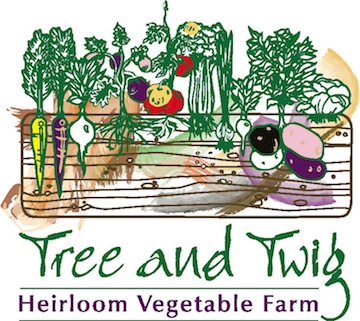Squash
Culture: Direct seed into warm soil, mounded into hills with a generous layer of compost worked in. Or can be seeded indoors four weeks before setting out, but is best seeded in biodegradable pots as it doesn't appreciate having roots disturbed during transplanting. Water well and protect from attackers such as cucumber beetles, squash bugs and squash vine borers. Agriculture fabric is excellent for protecting young, vulnerable plants. All packets 25 seeds.
Summer
- Black Beauty Zucchini (C. pepo) SOLD OUT for 2012
The standard summer squash. Compact spiny everbearing bush with dark greenish-black skinned fruits. Long cylindrical fruits are best eaten when 6-8" long. Excellent variety for freezing. AAS in 1957. 44-64 days. - Golden Zucchini (C. pepo)
Developed by breeders at W. Atlee Burpee from genetic material supplied by Ovid Shifriss at Rutgers. Introduced to gardeners in 1973. Glossy golden-yellow cylindrical fruits on productive, compact bush plants. A great addition to any farm market stand or to the home garden. 50-55 days. - Bennings Green Tint (C. pepo)
Bowl-shaped bush scallop with good yield of greenish-cream fruits. Good-eating qualities when young. Rock-hard ornamental when fully mature. 55-70 days. - Summer Crookneck (C.Pepo)
Domesticated by the North American natives before the arrival of the Pilgrims. Bushy plants produce loads of pretty bright yellow warty fruit that is best eaten young..although when older, they make very pretty fall decoartions.55-60 days.
Winter
- Amish Pie (cucurbita maxima)
One of the very best processing pumpkins – is pie in your future? Pale orange flesh measures up to 5" thick and the fruits can grow up to 60-80 pounds. 90-110 days. - Chersonskaya (cucurbita maxima) SOLD OUT for 2012
Ukrainian heirloom, grey green rind with shallow furrows and dense orange flesh that is excellent for baking. In a 2010 taste test, Seed Savers Exchange staffers rated it as the sweetest squash they had ever tasted. 90-100 days. - PA Dutch Crookneck (cucurbita moschata)
Beautiful and enormous, each squash can weigh 10-20 pounds. That's a lot of eating! Sweet dark orange flesh is easy to work with and is excellent in pies or soups. Stores well. 100-110 days. - Potimarron (Cucurbita maxima)
A small winter squash from France, inversely pear-shaped, with a flavor like chestnuts. The name is derived from the French: potiron (pumpkin) and marron (chestnut). Superb table quality in a small (3-4 pounds) manageable size. 85-95 days. - Red Kuri
Also called Uchiki Kuri. This is a very delightful Japanese variety. 3-4 lb bright red-orange variety, with a sweet dry flesh. 90 days. - Rouge Vif d'Etampes (cucurbita maxima)
The Cinderella pumpkin. A beautiful French heirloom introduced to the US by Burpee in 1883. Very flattened red-orange fruit with wide ribs and can weigh up to 20 pounds. Highly decorative, but not a good eater. 95 days. - Sibley
A rare squash, also known as Pikes Peak, it has bluish-green and very hard skin with sweet orange flesh. Very tasty and another good keeper. 120 days. - Thelma Saunders Sweet Potato (cucurbita pepo)
This has always been one of my favourite squashes. Sweet little cream-coloured acorn squash with huge production and a lovely chestnut flavour. 85-90 days.
